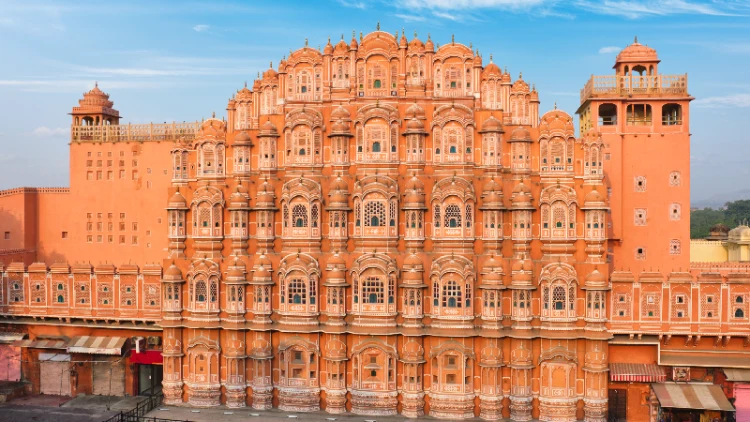Jaipur, the Pink City, is a treasure trove of history and heritage. While the city is famous for its iconic forts and palaces, there are numerous lesser-known facts and hidden gems that offer a deeper insight into its rich past. This guide is tailored for history buffs who want to explore Jaipur beyond the usual tourist trails and uncover the fascinating stories that make the city truly unique.
The Founding of Jaipur: A Planned City
The Vision of Maharaja Sawai Jai Singh II
Jaipur was founded in 1727 by Maharaja Sawai Jai Singh II, a visionary ruler and an avid astronomer. Unlike other cities of that era, Jaipur was meticulously planned based on the principles of Vastu Shastra and Shilpa Shastra.
Interesting Facts:
- Grid Layout: The city was designed in a grid pattern, divided into nine blocks, symbolizing the nine divisions of the universe.
- Pink Color: The city was painted pink in 1876 to welcome the Prince of Wales, and the tradition continues to this day.
The Role of Vidyadhar Bhattacharya
Vidyadhar Bhattacharya, the chief architect of Jaipur, played a crucial role in the city’s planning. His expertise in Vastu Shastra ensured that the city was not only aesthetically pleasing but also scientifically designed.
Lesser-Known Historical Sites
Panna Meena Ka Kund: The Hidden Stepwell
History and Significance
Panna Meena Ka Kund is a centuries-old stepwell that served as a water reservoir and a community gathering place. Its symmetrical steps and intricate design make it a hidden gem for history enthusiasts.
Tips for Visitors:
- Best Time to Visit: Early morning or late afternoon for the best lighting.
- Photography: Capture the symmetrical steps and reflections in the water.
Galta Ji Temple: The Monkey Temple
History and Significance
Galta Ji Temple, also known as the Monkey Temple, is a sacred pilgrimage site with a series of temples and natural springs. It’s believed to have been frequented by saints and sages.
Tips for Visitors:
- Best Time to Visit: Early morning to avoid the heat and crowds.
- Monkeys: Be cautious of the monkeys and avoid carrying food.
Sisodia Rani Garden: A Royal Retreat
History and Significance
Sisodia Rani Garden was built by Maharaja Sawai Jai Singh II for his queen. The garden features beautiful murals depicting the love story of Radha and Krishna.
Tips for Visitors:
- Best Time to Visit: During the monsoon when the garden is lush and green.
- Photography: Capture the vibrant murals and serene landscape.
Architectural Marvels: Beyond the Forts and Palaces
Isarlat (Swarg Suli): The Tower of Heaven
History and Significance
Isarlat, also known as Swarg Suli, is a seven-story tower built by Maharaja Ishwari Singh. It was used as a watchtower and offers panoramic views of the city.
Tips for Visitors:
- Best Time to Visit: Early morning or late afternoon.
- Entry Fee: ₹10 for Indians, ₹50 for foreigners.
Albert Hall Museum: A Colonial Legacy
History and Significance
Albert Hall Museum, built in 1876, is the oldest museum in Rajasthan. It houses an impressive collection of artifacts, including an Egyptian mummy and traditional Rajasthani carpets.
Tips for Visitors:
- Best Time to Visit: Evening when the museum is beautifully lit.
- Entry Fee: ₹40 for Indians, ₹300 for foreigners.
The Role of Jaipur in Indian Independence
The Contribution of Jaipur’s Royals
The royals of Jaipur played a significant role in India’s struggle for independence. Maharaja Sawai Man Singh II was known for his progressive views and support for the independence movement.
The Jaipur Conspiracy Case
The Jaipur Conspiracy Case was a significant event during the independence movement, involving several freedom fighters from Rajasthan.
Hidden Stories and Legends
The Curse of Nahargarh Fort
Legend has it that Nahargarh Fort was haunted by the spirit of Nahar Singh Bhomia, whose land was acquired to build the fort. The spirit caused construction delays until a temple was built in his honor.
The Secret Tunnels of Amber Fort
Amber Fort is said to have secret tunnels that connect it to Jaigarh Fort and other parts of the city. These tunnels were used as escape routes during wars.
Tips for History Buffs Exploring Jaipur
Best Time to Visit
- October to March: Pleasant weather, ideal for exploring historical sites.
- Avoid Summer (April to June): The heat can be intense.
Guided Tours
- Heritage Walks: Join guided heritage walks to explore Jaipur’s hidden gems.
- Local Guides: Hire local guides for in-depth knowledge and insights.
Photography Tips
- Early Morning and Late Afternoon: Best lighting for capturing historical sites.
- Respect Restrictions: Some sites may have photography restrictions.
Final Thoughts
Jaipur is a city that offers a rich tapestry of history and heritage. For history buffs, the city’s lesser-known facts and hidden gems provide a deeper understanding of its fascinating past. Use this guide to explore the best of Jaipur’s historical sites and uncover the stories that make the Pink City truly unique.

